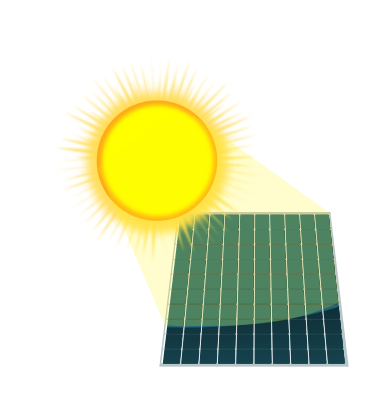A recent story by The New Yorker dove into the astonishing growth of solar energy over the past few years. Among other extensive data, the magazine notes that renewables made up 96 percent of demand for new energy throughout the globe in 2024; In the United States, 93 percent of new energy capacity came from solar and wind.
But while renewables writ large are having their day, the speed at which solar energy in particular is growing blows everything else out of the water.
For example, it’s now estimated that the world is now installing one gigawatt worth of solar energy infrastructure every 15 hours — or about the output of a new coal plant.
For some historical context, the New Yorker notes that it took 68 years since the invention of the first photovoltaic solar cell in 1954 to construct a single terawatt’s worth of solar power. It took just two years to hit the second terawatt in 2024, and the third is expected within mere months.
This explosive growth has been fueled by huge efficiency gains in solar energy output, breakthroughs in manufacturing, and streamlined installation processes. There’ve also been huge developments in panel recycling, meaning the darker side of solar energy — mineral extraction and panel fabrication — might one day be a thing of the past.


I’ll give another factoid:
In a sunny day, around noon, many EU countries have below-zero prices for electricity exports:
It comes with a different set of issues, but this is not prospective or a hypothetical: this is the world we are living in, with the operator of the French grid warning that we are currently at solar saturation.
Now we need the other part of the puzzle: energy storage. On a HUGE scale.
negative prices only exist because the operators of big solar parks have not considered implementing circuit breakers into their solar parks in the past.
with these breakers, whenever the energy prices are about to go negative, the breaker disables the solar park and it stops feeding into the grid. it’s a very simple measure but very effective. in theory, negative energy prices should not exist that way.
Where is this graphic from? It’s awesome!
RTE (French national grid operator)'s realtime data. It is indeed awesome to have realtime trackers of that!
EDIT: looks like the link in english is dead right now, here it is in french: https://www.rte-france.com/eco2mix/les-echanges-commerciaux-aux-frontieres
Where are these negative prices? I’m in Switzerland and my electricity price just keeps going up.
These are the prices on the European market for electricity exchange between countries. It has a whole can of worms when it comes to problematic incentives, but it is indeed not consumer prices and (IMO) designed to enrich useless intermediaries.
If energy has a negative cost wouldn’t this make it worth doing things that take a lot of energy at that point
like mine bitcoin?Not sure how much would fit that though, industry that can use a lot of power and is ok with irregular running times. Hydrogen production through water electrolysis is a popular idea but not sure if it’s at a point of being useful at scale.
The negative prices are partly caused by the way the grids are designed. Basically, where the solar parks are today, used to be end of the line in the coal power days. So the grid can’t handle the influx of energy in that area. It remains to be seen if this will still be the case in a few years, assuming the grid will be expanded in these areas. We would still need some form of storage though.
Another option would be electro-chemical processing of metals which uses a lot of electricity and could in theory be only turned on when there is surplus power.
i think that current electricity prices are a good way to regulate which consumer runs at what time
after all, prices are lowest when there’s lots of renewables feeding into the grid. and that is also when the consumers get the cheapest power, then that is when they should be consuming the energy that is available.
I’ve read that this phenomena - near zero energy at times of peak production, is producing some interesting effects on some areas of energy use.
For example, one potential use of this excess energy is hydrogen electrolysis. Traditionally, industrial electrolyzers have been built to maximize energy efficiency. They’ll use expensive platinum anodes to get the absolute most out of every watt of power.
However, in this application - taking advantage of dirt cheap intermittent electricity - we might not actually want to optimize for efficiency. These machines are expensive. And if you’re only running them for a few hours a day, making the machines cheaper to build may trump making them maximally efficient. You need a machine cheap enough to run for just a few hour a day and let sit idle the rest of the time. So some companies are developing electrolyzers that are designed to use the cheapest materials possible, even if they’re less efficient than those made with platinum anodes. Dirt cheap electrolyzers might have 20-30% less efficiency than the expensive ones, but if they cost a small fraction to build, it can be worth it. That extra energy was just going to go to waste anyway.
When energy is essentially free but highly intermittent, it starts changing the whole calculus for how you build industrial machinery. You start optimizing more for lower CAPEX and less for efficiency.